Introduction
Nestled in the heart of China’s Shaanxi Province, Xi’An is a city where history comes alive. Once known as Chang’an, this ancient metropolis was the capital for numerous Chinese dynasties, making it one of the country’s most historically significant destinations.
As the eastern gateway to the ancient Silk Road, Xi’An was a thriving center of trade, culture, and religion. Today, it stands as a living museum where old traditions meet modern life. From the legendary Terracotta Warriors to the vibrant Muslim Quarter, Xi’an offers an unforgettable journey into China’s past and present.
A Glimpse into Xi’An’s History
Xi’An’s roots stretch back over 3,000 years, earning it the title of one of the Four Great Ancient Capitals of China. It served as the political heart of several dynasties, including the Zhou, Qin, Han, and Tang, shaping the foundations of Chinese civilization.
During its golden era, Xi’an—then called Chang’an—was a vibrant cosmopolitan hub. Merchants, pilgrims, and scholars from across Asia and beyond traveled along the Silk Road, bringing with them goods, knowledge, and religious beliefs. This cultural exchange enriched the city and left behind a diverse legacy that remains visible in its architecture, cuisine, and communities today.
Top Tourist Attractions
The Terracotta Warriors
Discovered in 1974 by local farmers, the Terracotta Army is one of the most extraordinary archaeological finds of all time. These thousands of life-sized clay soldiers were buried to protect Emperor Qin Shi Huang in the afterlife. Each figure is uniquely crafted, representing various military ranks and positions.
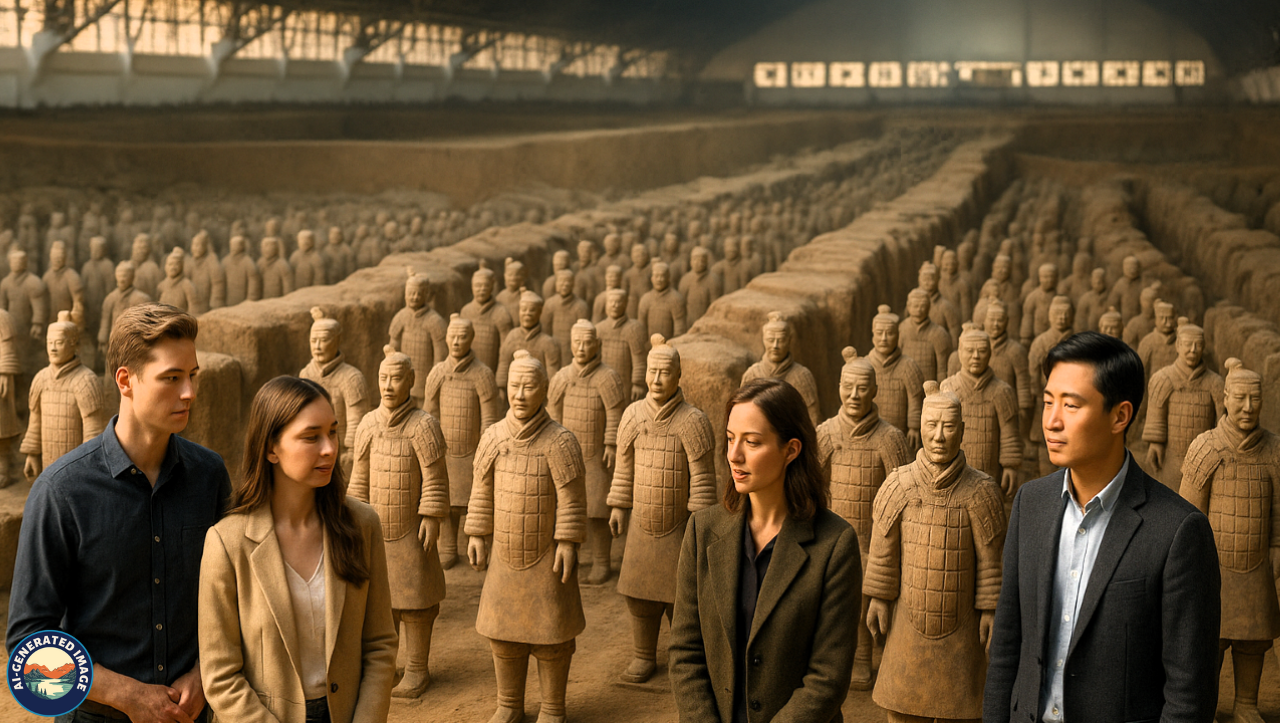
Located about 40 kilometers from the city, the site includes three main excavation pits and a museum that offers insights into the emperor’s vision and the artisanship of the time. The sheer scale and detail of the Terracotta Warriors make this a must-see attraction.
Insider Tip:
For a deeper understanding, consider joining a guided tour that explains the historical and artistic aspects of the site.
The Ancient City Wall
The Xi’An City Wall, originally built during the Ming Dynasty in the 14th century, is among the best-preserved city walls in China. It encircles the old city in a rectangular shape, measuring approximately 13.7 kilometers in length and standing 12 meters high.

Visitors can walk or rent a bike to explore the top of the wall, enjoying sweeping views of both ancient courtyards and modern developments. Each gate—North, South, East, and West—once served as entry points to the city and is adorned with defensive towers.
Travel Tip:
The South Gate is the most scenic and lively, especially in the evening when it’s beautifully illuminated.
Big Wild Goose Pagoda
Built in 652 AD, the Big Wild Goose Pagoda stands as a symbol of ancient Buddhist devotion. It was originally constructed to store sacred scriptures brought back from India by the monk Xuanzang, whose journey inspired the classic Chinese tale Journey to the West.
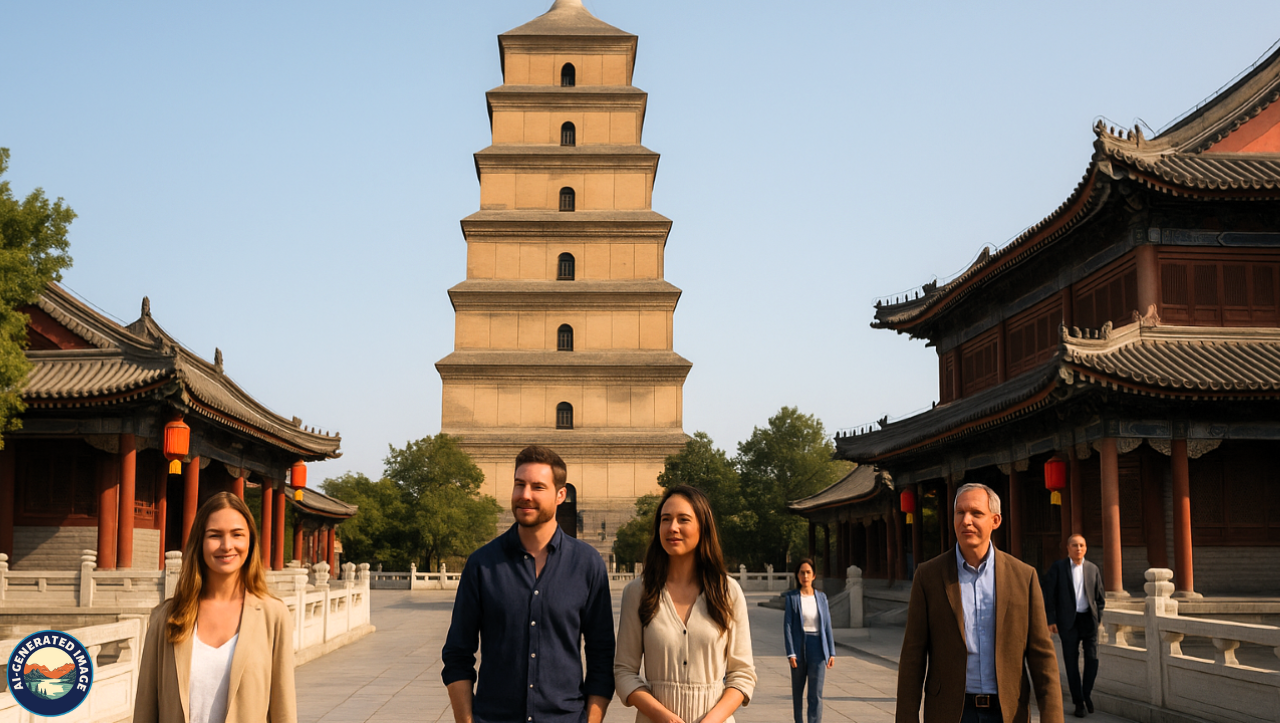
This brick pagoda, with its classic tiered structure, rises to a height of 64 meters and provides panoramic views from the top. The surrounding square features fountains and light shows in the evenings, adding a modern twist to this historic site.
Don’t Miss:
The Xuanzang Memorial Hall, which tells the story of the monk’s spiritual expedition.
Muslim Quarter and the Great Mosque
The Muslim Quarter, located near the Drum Tower, is a lively neighborhood known for its rich cultural heritage and mouthwatering street food. This area is home to the Hui people, a Chinese Muslim community whose ancestors arrived via the Silk Road.
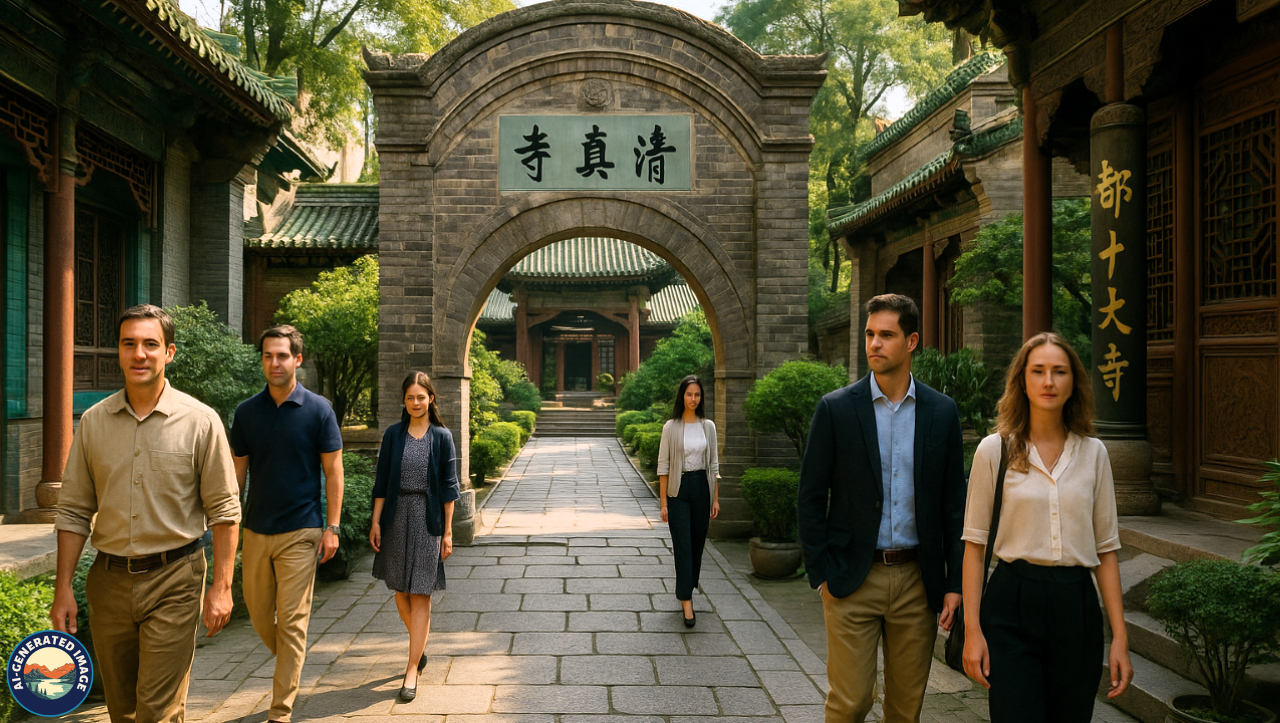
Wander through the narrow lanes filled with vendors selling everything from grilled lamb skewers to handmade souvenirs. At the heart of this area is the Great Mosque of Xi’an, a unique blend of traditional Chinese architecture and Islamic motifs. Built in the 8th century, it remains a peaceful retreat amidst the bustling market.
Must-Try Treats:
-
Spicy beef noodles
-
Sticky rice cakes
-
Lamb stew
-
Fried persimmon cakes
Shaanxi History Museum
For those eager to explore the deeper layers of Chinese civilization, the Shaanxi History Museum offers a treasure trove of artifacts. With over 370,000 items, the museum covers dynasties ranging from the Zhou to the Tang.
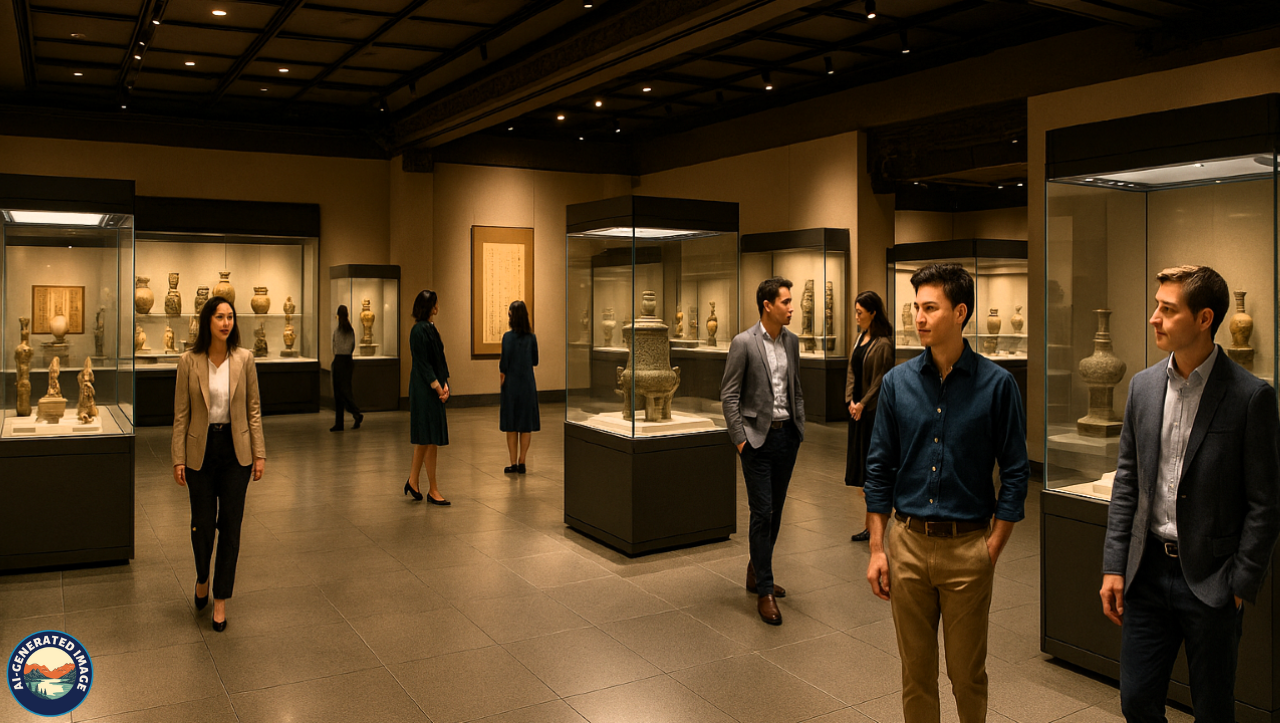
Exhibits include bronze vessels, ancient coins, silk paintings, pottery, and more—all arranged chronologically to tell the story of China’s cultural and political evolution. The museum is an excellent complement to the city’s outdoor historical sites.
Entry Note:
Admission is free, but tickets are limited each day—reserve ahead if possible.
Bell Tower & Drum Tower
These two historic towers stand at the heart of Xi’An’s city center. Built during the Ming Dynasty, the Bell Tower was used to mark the start of the day, while the Drum Tower signaled nightfall.
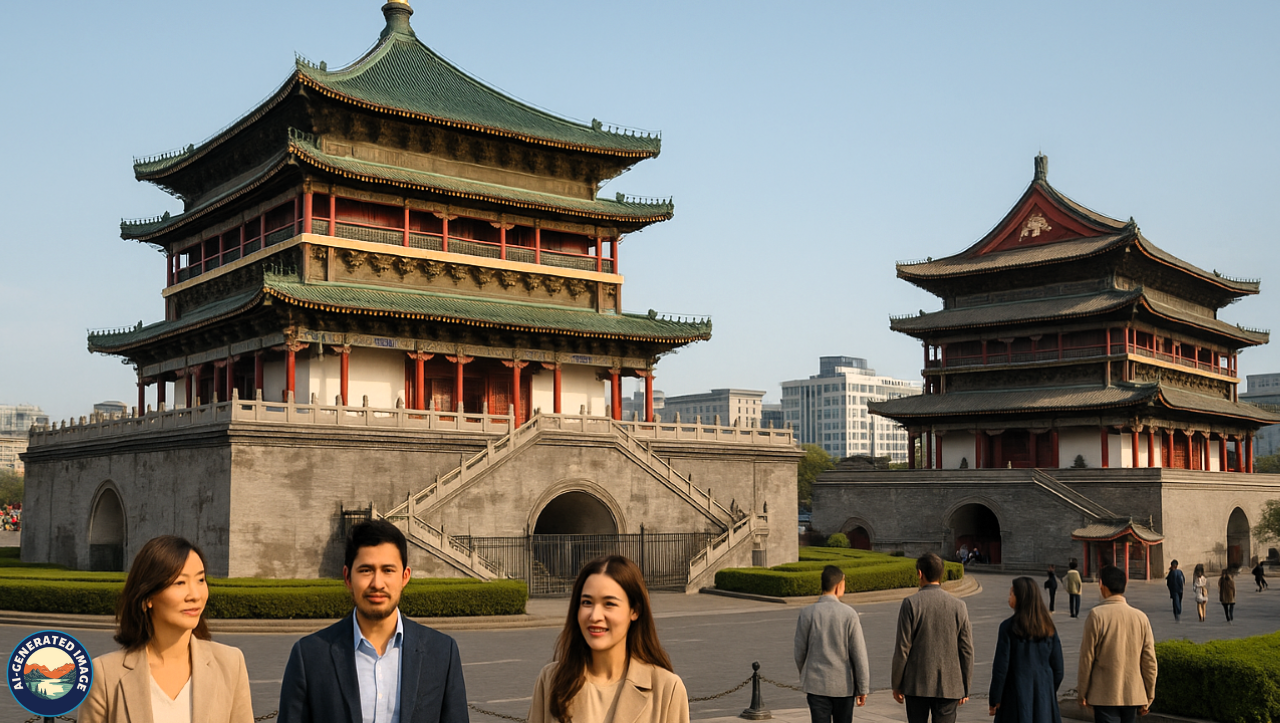
The towers offer excellent city views and house exhibitions of ancient bells and drums. In the evening, both are illuminated with golden lights, creating a magical atmosphere. Cultural performances are also occasionally held inside.
Huaqing Palace and Hot Springs
At the base of Mount Li, just outside Xi’An, lies Huaqing Palace, a former royal retreat with natural hot springs. The site became famous as the setting for the romantic story between Emperor Xuanzong and his beloved concubine Yang Guifei during the Tang Dynasty.
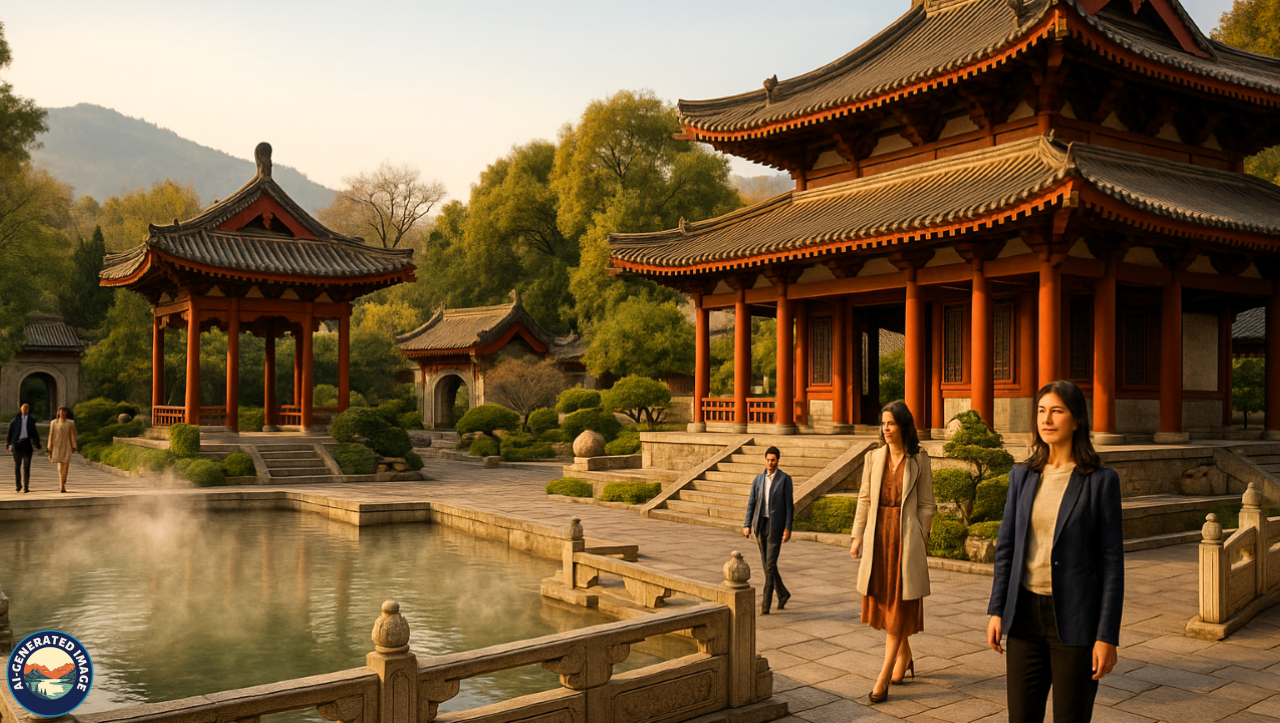
The complex includes reconstructed palaces, scenic gardens, and ancient bathhouses. It’s also known for the “Everlasting Regret” Show, a nighttime performance that combines music, dance, and visual effects to retell the emperor’s tragic love story.
Cultural Traditions and Festivals
xi an remains a center for traditional Chinese culture. From elaborate stage performances to folk art and ancient music, the city is alive with creative expression.
Cultural Activities:
-
Attend a Tang Dynasty Dinner Show for traditional music and dance
-
Visit calligraphy studios to try Chinese brush writing
-
Explore local workshops offering shadow puppetry and folk crafts
Popular Festivals:
-
Chinese Lunar New Year:
-
Dragon dances, lanterns, and temple fairs fill the streets
-
Lantern Festival:
-
Features giant illuminated figures and themed displays
-
Mid-Autumn Festival:
-
Locals gather to eat mooncakes and enjoy the full moon near scenic spots
Xi’An’s Culinary Highlights
Xi’An is a paradise for food lovers. Influenced by Silk Road flavors and traditional northern Chinese cooking, the cuisine here is bold, savory, and rich in spices.
Signature Dishes:
-
Biang Biang Noodles:
-
Known for their thickness and spicy toppings
-
Roujiamo:
-
A crispy flatbread sandwich filled with slow-cooked meat
-
Yangrou Paomo:
-
Lamb soup served with crumbled flatbread
-
Liangpi:
-
Cold rice noodles with chili oil and vinegar
-
Jinggao:
-
Sweet glutinous rice snacks are often filled with red bean paste
Street food stalls, especially in the Muslim Quarter, offer some of the most authentic and flavorful bites in the city.
Top Day Trips from Xi’An
Mount Huashan
Renowned for its dramatic cliffs and breathtaking views, Mount Huashan is about two hours from Xi’An. It is one of China’s sacred Taoist mountains and offers trails for both casual hikers and thrill-seekers, including the Plank Walk, a narrow path along the cliff face.
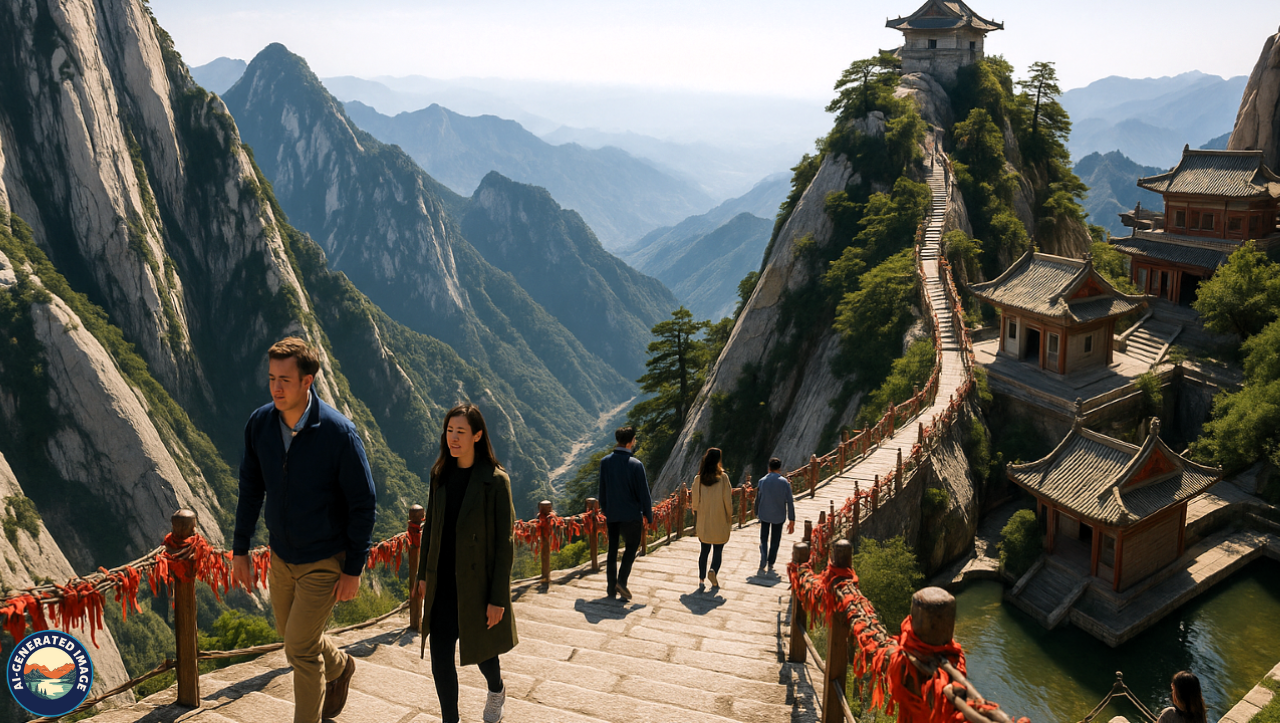
Famen Temple
Located west of Xi’an, this ancient temple is said to house a relic of Buddha’s finger bone. The site combines classical Chinese architecture with a sleek modern museum and spiritual ambiance.
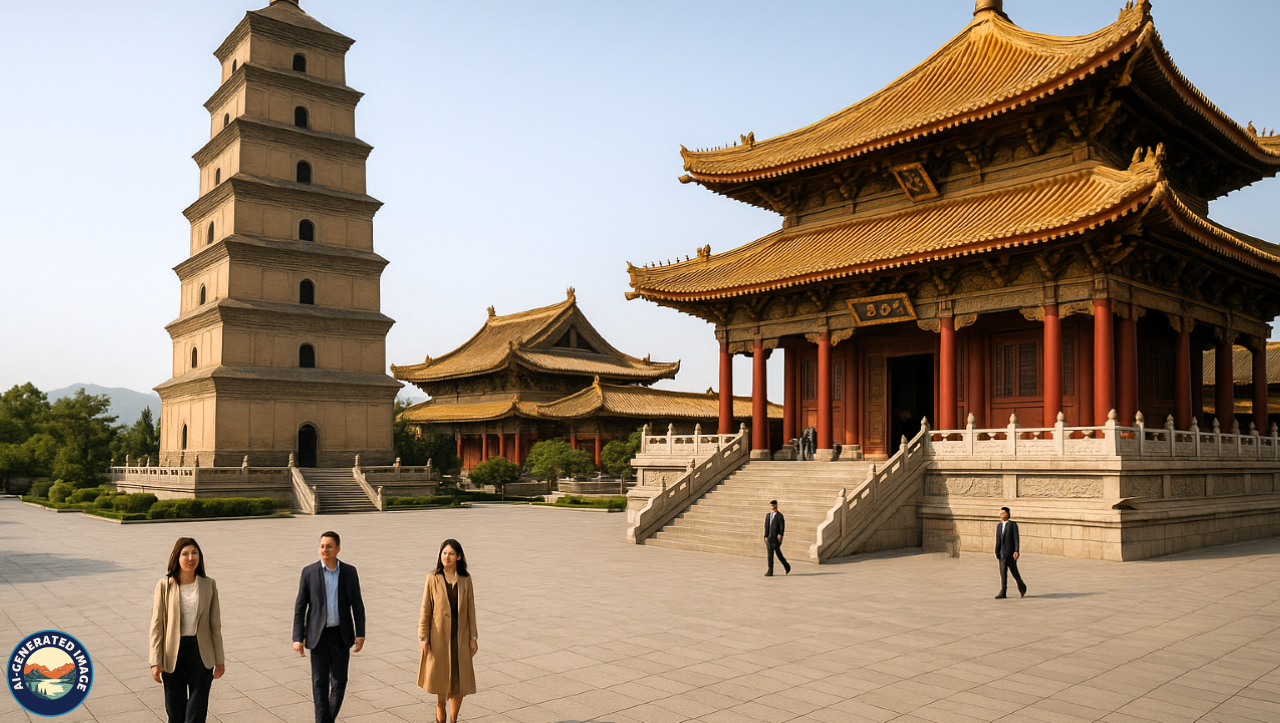
Emperor Jingdi’s Tomb (Hanyangling)
This lesser-known tomb provides a fascinating contrast to the Terracotta Army. Instead of full-sized statues, you’ll find smaller, realistic clay figurines and burial items. Walkways with glass floors allow visitors to view the excavation areas from above.
When to Visit
The best times to travel to Xi’An are during spring (March to May) and autumn (September to November), when the weather is mild and comfortable for outdoor exploration.
-
Spring:
-
Ideal for sightseeing and nature walks
-
Autumn:
-
Clear skies and fewer tourists
-
Summer:
-
It can be hot and humid, but museums and evening activities remain accessible
-
Winter:
-
Cold but quiet—great for budget travelers
How to Reach
Getting There:
-
By Plane:
-
Fly into Xi’An Xianyang International Airport, which has both domestic and international routes
-
By Train:
-
High-speed rail links Xi’an with Beijing, Shanghai, Chengdu, and other major cities
-
By Bus:
-
Buses are an option for nearby towns, though trains are faster
Getting Around:
-
Metro:
-
Efficient and inexpensive, with English signage
-
Taxis and Ride-Sharing Apps:
-
Readily available but may require translation tools
-
Biking:
-
Shared bikes can be found throughout the city
-
Walking:
-
Many attractions are within walking distance, especially in the old city area
Where to Stay
Recommended Areas:
-
Near Bell Tower:
-
Central location, close to shopping and transport
-
South Gate Area:
-
Ideal for a scenic stay near the City Wall
-
Muslim Quarter:
-
Great for food lovers and cultural experiences
Accommodation Options:
-
Luxury:
-
Sofitel Legend People’s Grand Hotel
-
Mid-range:
-
Eastern House Boutique Hotel
-
Budget:
-
See Tang Hostel or capsule hotels for backpackers
Practical Tips for First-Time Visitors
-
Language:
-
English is limited; use apps like Google Translate or Pleco
-
Currency:
-
Chinese Yuan (RMB); digital payments like Alipay and WeChat Pay are common
-
Connectivity:
-
Consider getting a local SIM card or portable Wi-Fi device
-
Local Etiquette:
-
Avoid loud behavior in temples; use both hands when offering items
-
What to Pack:
-
Comfortable walking shoes, a power adapter, and layered clothing depending on the season
Conclusion
Xi’An is a city where legends live on. From its role as a dynastic capital to its significance on the Silk Road, the city offers a rich tapestry of heritage, culture, and flavor. Whether you’re admiring the Terracotta Warriors, savoring local dishes, or exploring ancient temples, Xi’An delivers a powerful experience that bridges China’s glorious past with its dynamic present.
A trip to Xi’An isn’t just a vacation—it’s a journey through the heart of Chinese history.
FAQs
How many days should I spend in Xi’An
Three to four days are ideal to cover the major attractions and nearby sites.
Is Xi’An safe for tourists
Yes. It’s generally very safe, with a strong tourist infrastructure and low crime rates.
How do I reach the Terracotta Army from downtown Xi’An
Take bus 306 from Xi’an Railway Station or opt for a guided tour, or taxi.
Are there vegetarian-friendly food options in Xi’An
Yes. While meat dishes are popular, many vegetarian snacks and Buddhist meals are available.
Can I include Xi’An in a multi-city China tour
Definitely. High-speed trains make it easy to connect Xi’an with Beijing, Shanghai, Chengdu, and more.

